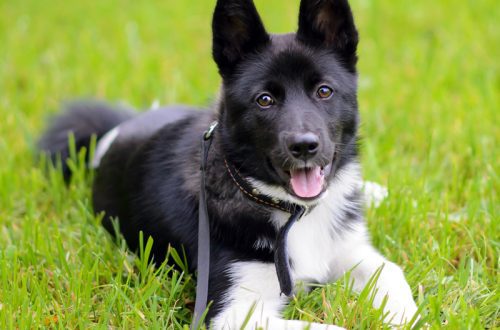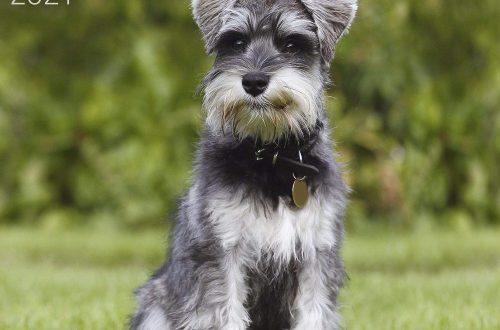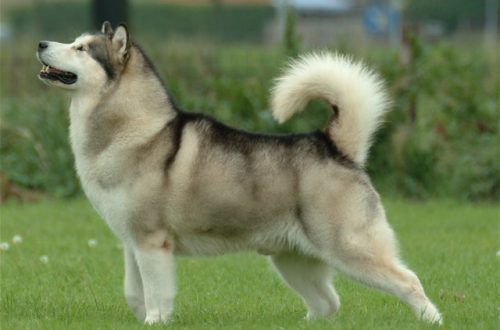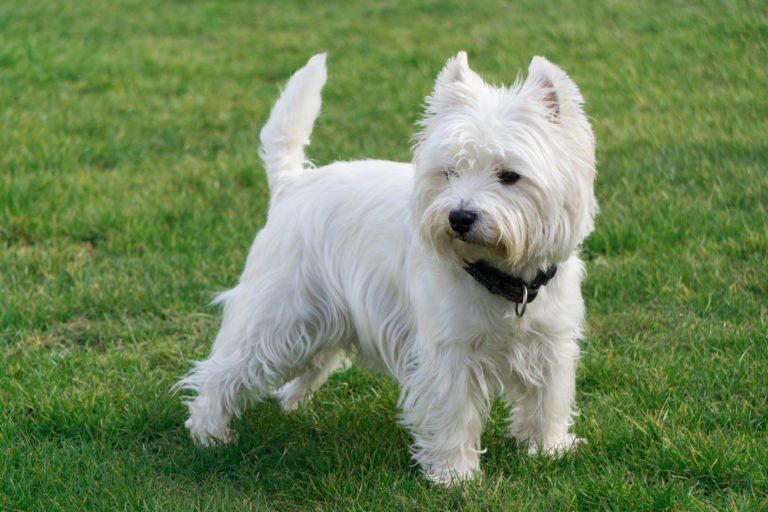
West Highland White Terrier
The West Highland White Terrier is a miniature “Scotsman” with a snow-white coat, bred specifically for working with small game. In everyday life he is bold, inquisitive and very playful.
Contents
- Characteristics of West Highland White Terrier
- History of the breed
- Character
- Description of the West Highland White Terrier
- Appearance of the West Highland White Terrier
- Care
- Conditions of detention
- Predisposition to disease
- West Highland White Terrier Prices
- Photo of West Highland White Terrier
- Health and disease of the West Highland White Terrier
- Photos of West Highland White Terrier puppies
- Education and training
- How to choose a puppy
- Video
Characteristics of West Highland White Terrier
| Country of origin | UK (Scotland) |
| The size | Small |
| Growth | 25-28 cm |
| Weight | 8–10 kg |
| Age | up to 15 years |
| FCI breed group | Terriers |
Brief information
- Funny, sociable and very cute dogs;
- Sometimes they can be a little stubborn;
- Courageous and bold, devoted to the owner.
History of the breed
The name of the breed of the West Highland White Terrier indicates the geography of origin and color of this dog: the birthplace of these dogs is the western highlands of Scotland, and the only acceptable color for its coat is white.
The West Highland White Terrier is one of the representatives of the Scottish Terrier group, which also includes the Dandie Dinmont Terrier, Skye Terrier and Cairn Terrier . By the way, the latter is the progenitor of the West Terriers. At home, in Great Britain, the West Highland White Terrier was already known in the 19th century, but officially the first club of lovers of this breed was registered only at the beginning of the 20th century.
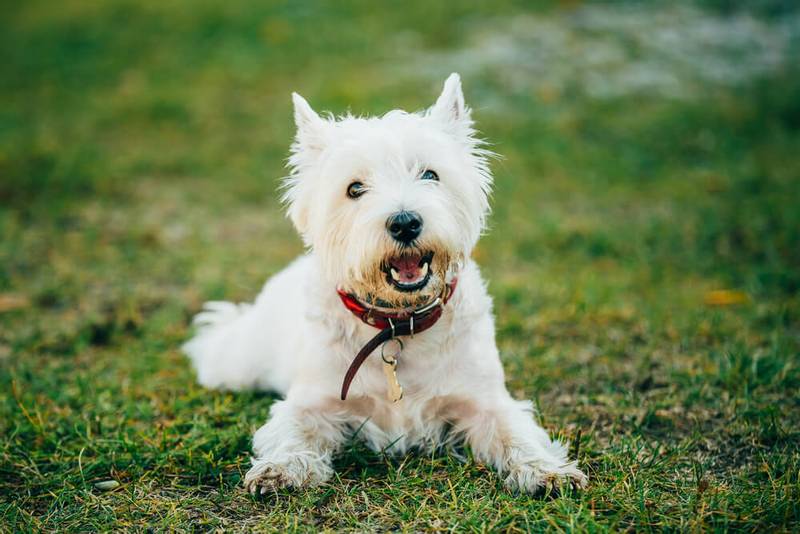
The ancestors of this breed were known as early as the 12th century: terriers were used for burrow hunting for fox, badger and otter. Having proven themselves to be loyal, devoted and efficient hunting assistants, the animals aroused the interest of the lairds (representative of the untitled Scottish nobility). Full-fledged breeding of West Highland White Terriers began at the end of the 19th century, when Duke George Campbell bred a breed of white dogs called “Roseneath Terriers” in honor of the name of his estate. Similarly, Dr. America Edwin Flaxman became interested in breeding white terriers, starting a branch of “Pittenium Terriers”. However, the official founder of the modern West Highland White Terrier is Laird Edward Donald Malcolm. According to legend, he decided to breed white terriers, because once he accidentally shot one red dog during a hunt, confusing it with a fox.
The name of the West Highland White Terrier was first fixed in 1908, and the final breed standard was formed only by 1930.
For convenience, these dogs are sometimes diminutively called “west”.
Character
Despite its compact size and cheerful disposition, the West Highland White Terrier is a real hunter! These hardy dogs helped people catch foxes, otters, badgers and other small animals. Today, they act as a companion dog and do their job perfectly.
The West Terrier is a tireless and energetic dog. A restless pet needs games, active walks and communication with the owner. He is devoted to the family and will gladly accompany her on travels, even long ones. In addition, a feature of the West Highland White Terrier is its determination and courage.
By the way, representatives of the breed have a rather sonorous voice and are not averse to demonstrating it once again. So that the pet does not bark in vain, the dog must be trained . The West Highland White Terrier is smart and curious and will love to learn new things. True, sometimes he can be a little stubborn, especially if he is tired. Nevertheless, a smart dog will surely please the owner with his knowledge. Therefore, the West Terrier is great for people who have no experience in animal training.
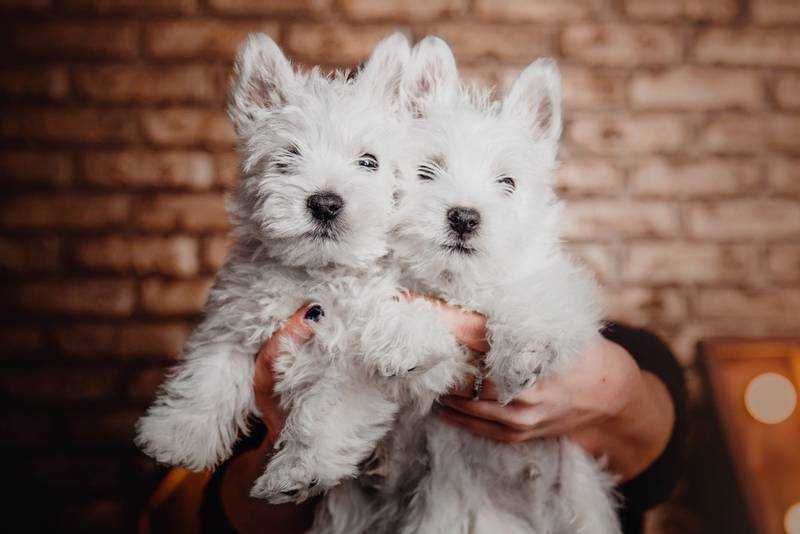
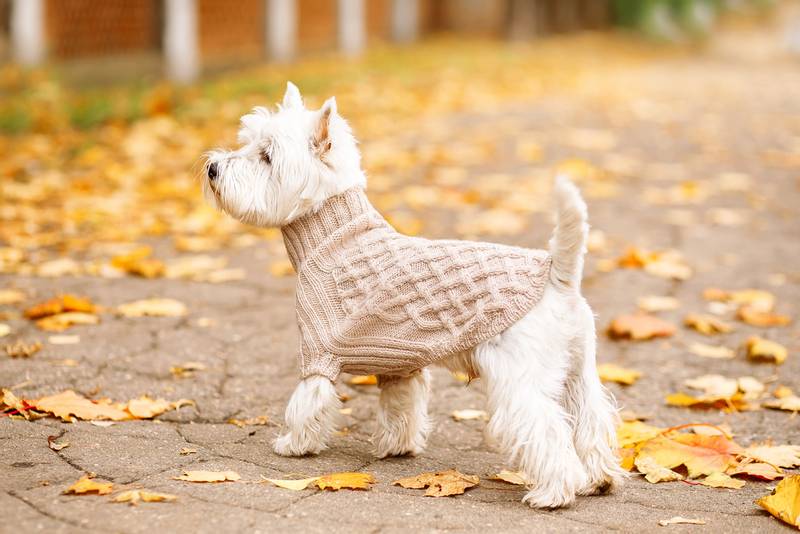
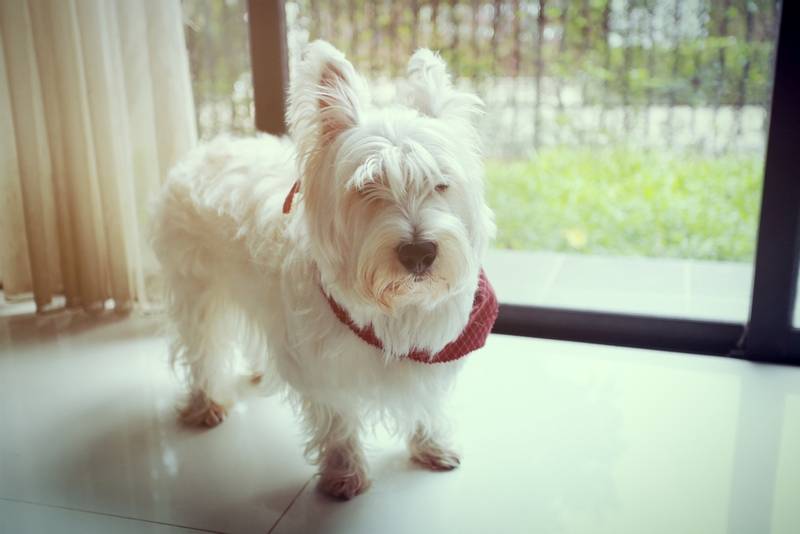
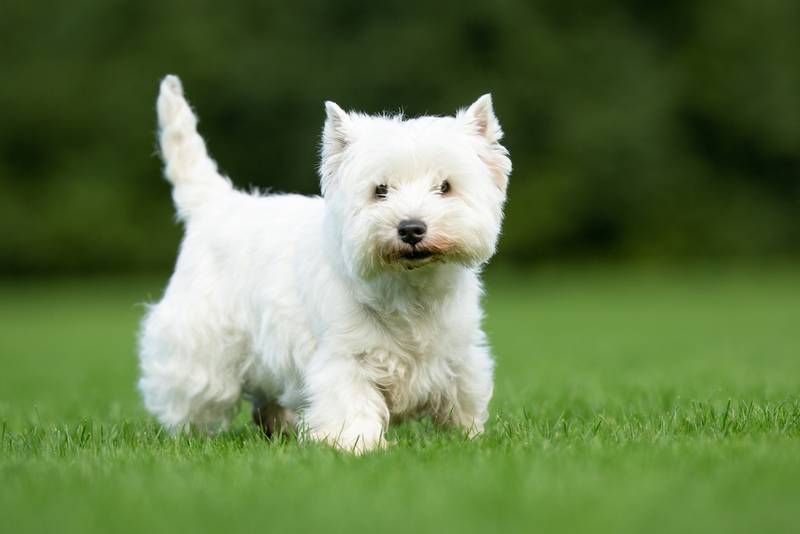
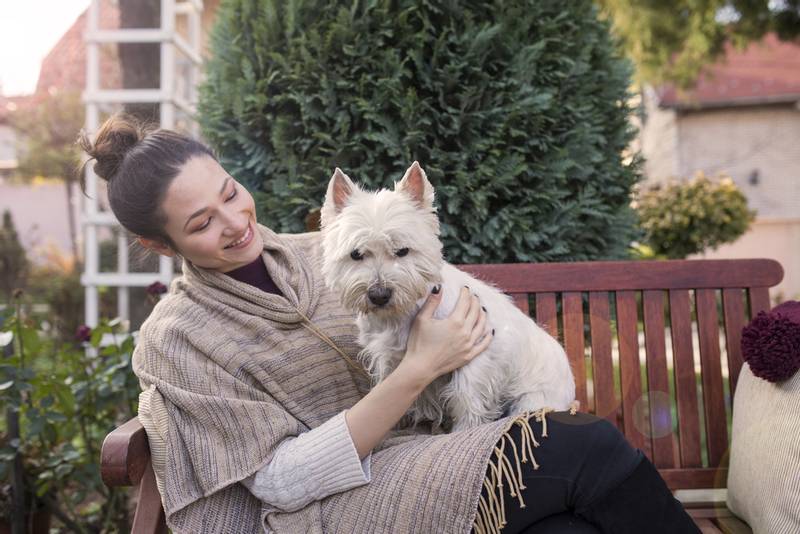
Representatives of the breed are quite friendly and sociable, but at the same time they can be jealous . West Highland White Terrier, despite the quiet neighborhood with other pets, requires attention and affection. These dogs are good with school age children. They will be happy to play and walk with the kids.
Description of the West Highland White Terrier
West Highland White Terriers are compact and short-limbed. These are stocky, but very mobile dogs.
The rounded wide head is covered with thick hair. The dog has a very intelligent and insightful look. Her eyes are medium in size, almond shaped and dark in color. The relatively large nose should also be black. Ideally, dark graphite or black color should also be eyelids, lips, palate, fingertips and claws of the animal. Pointed small ears are set straight and not too wide, on the outside of the shells there is a small fringe (except for the upper parts). The tail can reach up to 15 cm in length, is held almost vertically, in no case is bent or wrapped in a ring.
The main external feature of dogs of this breed is a long (up to 5 cm) stiff white coat. It must not be wavy or curled and may not be of any other color. Extremely rarely, due to hereditary causes or care errors, a yellowish undertone may appear. In the second case, it can be easily eliminated by changing the diet or light trimming.
Appearance of the West Highland White Terrier
The West Highland White Terrier is a snow-white, compact shaggy dog with an inquisitive look, vaguely resembling a Bichon Frize. Thanks to their cute appearance and more than modest dimensions (the height of an adult dog is up to 28 cm, weight is up to 10 kg), the West Highlands are quite suitable for the role of apartment dwellers. At the same time, they are not particularly fragile, like most representatives of decorative breeds, which means that the owner does not have to control every step and jump of the pet.
Head
The skull of the West Highland White Terrier is wide, slightly domed, with a pronounced stop and prominent brow ridges.
Jaws and bite
Despite the fact that the West Highland White Terrier is an almost miniature dog, its jaws are powerful. As for the bite, it is a complete, scissor-like type of representatives of this breed.
Eyes
The wide and fairly deep-set eyes of the West Highland White Terrier are almond-shaped and have a dark iris color. The look of the dog is intelligent, insightful.
Nose
The news has a large, black nose, almost not protruding beyond the muzzle.
Ears
The small, pointed ears of the West Highland White Terrier are not set too wide and are held straight. The outer side of the ear cloth is covered with velvety fur, which is never sheared.
Neck
Dogs have a moderately long and well-muscled neck, which gradually thickens towards the body.
Frame
The body of the representatives of this breed is compact, with a straight back, a strong lumbar region and a wide croup.
limbs
The forelegs of the West Highland White Terrier are short, well muscled and without curvature or outward turning. In some cases, the paws of the animal may be slightly deployed. Experts explain this feature by the fact that during the hunt, the ancestors of today’s dogs tore the ground, throwing it to the sides, which provoked a slight spread of the limbs. The hind legs of the West Highlands are short but sinewy, with a fleshy and broad upperparts. The paws of the dogs are rounded, with plump pads and tightly closed toes, while the front paws are noticeably larger than the hind legs.
Tail
It has a straight tail up to 15 cm long, which it carries almost vertically.
Wool
The coat of the West Highland White Terrier consists of a dense, furry undercoat and a harsh outer coat that can be up to 5 cm long.
Color
The West Highland White Terrier is one of the few breeds whose modern representatives exist in a single color – white. An important point: the color of the coat is extremely unstable and very dependent on external factors, so among animals there are often individuals whose “fur coats” have a yellowish undertone.
Defects and disqualifying vices
Any more or less noticeable deviations from the standard can affect the exhibition evaluation of show class West Highland White Terriers. These are usually wavy or curly hair, large ears, short or vice versa – an excessively long neck, atypical set of limbs. As a rule, a dog can be prevented from participating in competitions for two reasons: for the manifestation of unreasonable aggression or cowardice, as well as for obvious malformations in behavior and physical development.
Care
A distinctive feature of this breed is its white coat. She requires careful care. Once every ten to fifteen days, the dog is bathed using a special shampoo and conditioner. The pet is combed daily .
In addition, representatives of the breed need trimming and haircut . Owners should do this at least three to four times a year.
Conditions of detention
The West Highland White Terrier loves to walk, it is desirable that their duration is about three hours a day. On the street, it is worth keeping the pet busy with games and any activity, giving the dog the opportunity to throw out energy.
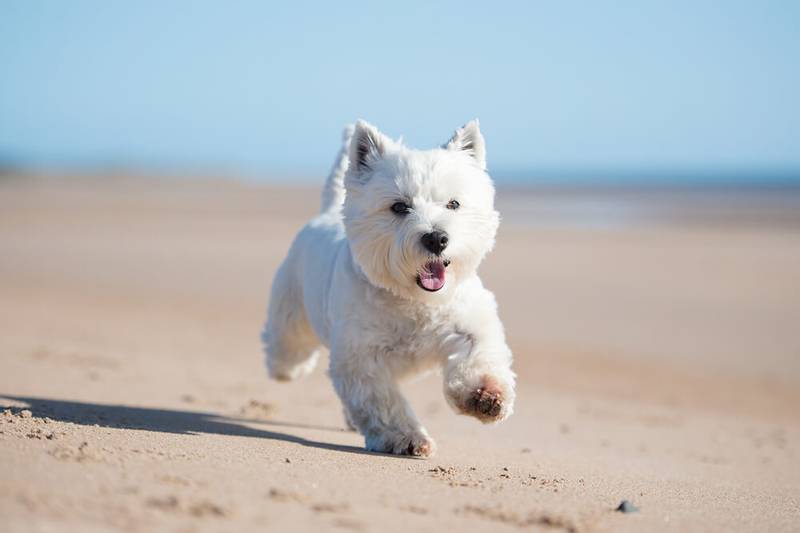
Representatives of this breed feel great in the city, but they will also be happy with life in the countryside. However, when letting the dog go for a walk in the garden, it is necessary to remember an important feature of terriers: they are big fans of digging in the ground.
Predisposition to disease
West Highland White Terriers rarely suffer from hereditary diseases, but in some cases they may have genetic ailments such as congenital deafness, hip dysplasia, diabetes mellitus, or von Willebrand disease (sudden bleeding, like hemophilia). In addition, these dogs may suffer from skin diseases such as atopy, ichthyosis, and epidermal dysplasia.
Sometimes dogs of this breed have diseases of the nervous system (Shaker’s syndrome), the genitourinary system (hyperuricosuria), the musculoskeletal system (Perthes’ disease) and the cardiovascular system.
West Highland White Terrier Prices
The cost of a purebred West Highland White Terrier puppy ranges from 600 to 1200$. The pedigree of such pets is most likely rich in show champions and elite individuals. For a puppy with less impressive documents or without them at all, you will have to pay from 200 to 400$. In this case, future owners will need to put up with minor deviations from the standard.
Photo of West Highland White Terrier
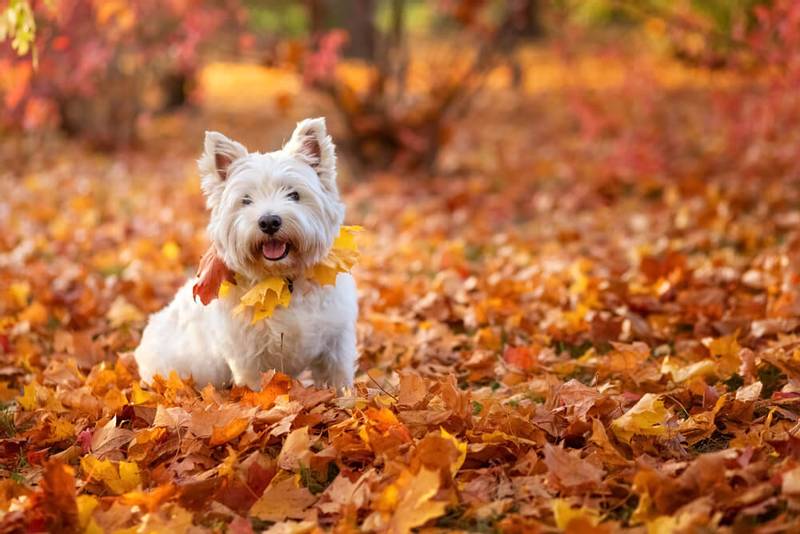
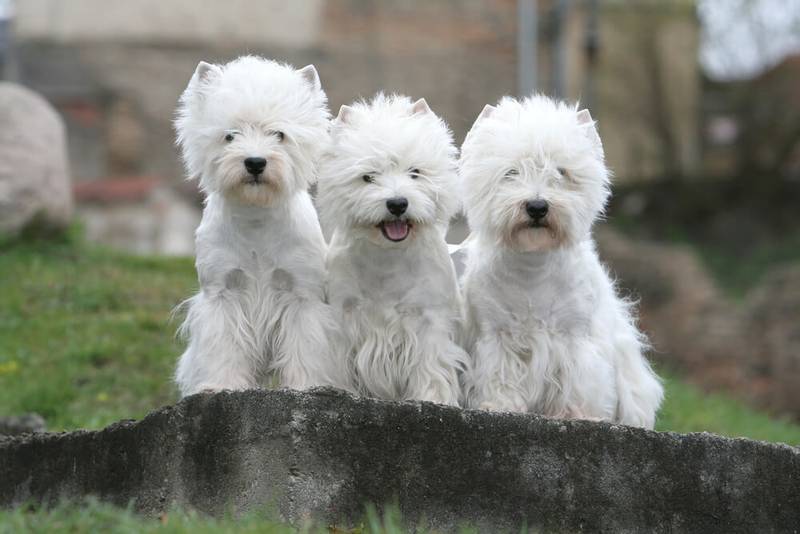
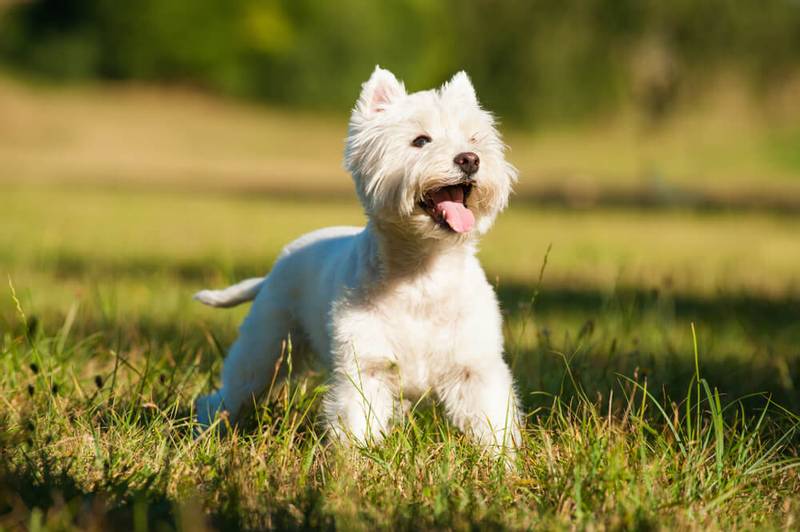
Health and disease of the West Highland White Terrier
West Highland White Terriers live an average of 13-15 years and are less prone to hereditary ailments than their terrier counterparts.
Diseases that can occur in West Highland White Terriers:
- cranial osteopathy;
- atopic dermatitis;
- epidermal dysplasia;
- ichthyosis;
- congenital deafness;
- hip dysplasia;
- diabetes;
- von Willebrand’s disease;
- cardiovascular diseases;
- meningoencephalitis of white dogs;
- Perthes disease;
- shaker syndrome;
- hyperuricosuria.
Photos of West Highland White Terrier puppies
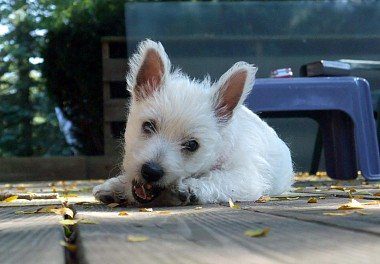
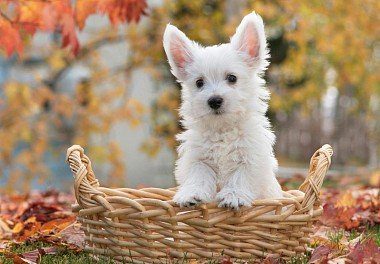
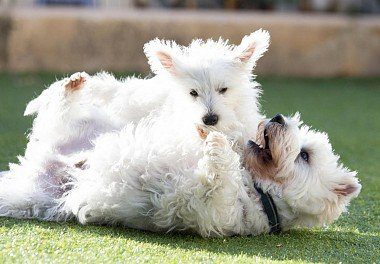
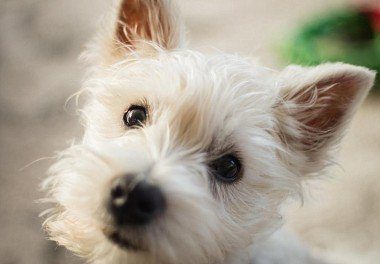

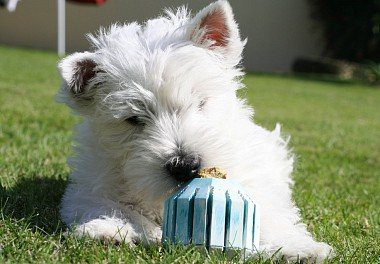
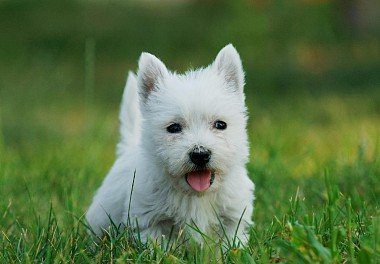
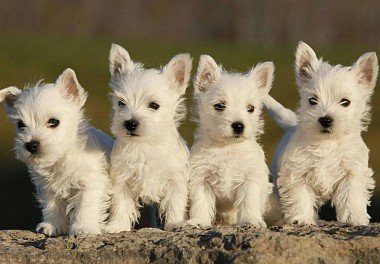
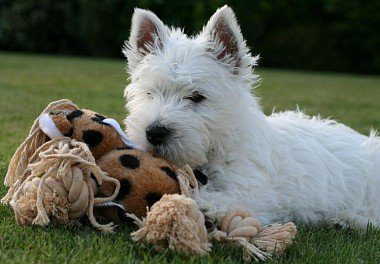
Education and training
The West Highland White Terrier will never follow the commands of someone he does not respect and considers obviously stupider than himself, so the first thing you should start training a dog with is to assert your own authority. In addition, the pet will have to be constantly stimulated, as this is not the kind of breed that will work on sheer enthusiasm. If your ward has successfully completed the command, appease him with a treat, then give him a game break – West Highland White Terriers love aimlessly messing around and fooling around no less than hunting. By the way, about games: from the very first days, let the pet understand that it is strictly forbidden to practice hunting skills on the owner and other family members. If the enraged West Highland White Terrier still tries to taste your hand or foot, gently switch his attention to the toy.
Important: during training and practicing commands, try to stay alone with your pet. The presence of strangers only slows down the training process, since it is more difficult for a dog to concentrate if two people communicate with it at the same time.
Teaching
Teaching a West Highland White Terrier puppy to a collar and leash should be done before going out for the first walk. To do this, buy a one and a half to two meter strap and an unfastening collar with a lock that will not have to be put on over the head, thereby scaring the animal. After the lead is 10 months old, you can train with it on the sites. It is better to enroll difficult-to-educate and especially stubborn individuals in some kind of kennel club, where an individual training program will be selected for them, and their behavior will be corrected.
If you do not want your life together with the West Highland White Terrier to turn into a “who wins” confrontation, pay special attention to teaching your pet the basic norms of behavior. In particular, don’t let the vestik lie on your bed and don’t let him stare with hungry eyes at the family members gathered around the table. And there are no exceptions to the rules and indulgences: despite the external weakness and fragility, the West Highlands turn the rope from the owner simply masterfully.
How to choose a puppy
- Choose reliable, proven catteries registered by RKF. In them, usually all matings are planned.
- Give preference to breeders or kennels who are ready to provide their clients with advisory support throughout the entire period of growing up a puppy. Unscrupulous “breeders”, whose main goal is to make a profit from the sale of animals, as a rule, do not make such concessions.
- If possible, look at several litters. Offspring from different parents can differ significantly both in external and behavioral indicators.
- The sex of the West Highland White Terrier practically does not affect the type of his temperament and intellectual abilities, although it is believed that males of this breed learn faster than females.
- Assess the level of hygiene and conditions for keeping puppies in the kennel. It is great if the kids do not sit in dirty cages, but move freely around the territory allotted to them.
- Touch the belly of the puppy you like. If additional swelling is felt in the navel area or there is a protrusion of the peritoneum, it is likely that in the future the baby will be diagnosed with a hernia.
- Responsible breeders test West Highland White Terriers for genetic diseases, so before buying, do not be too lazy to get acquainted with the results of the test, so that later you will not be surprised why your baby has health problems.
Video



